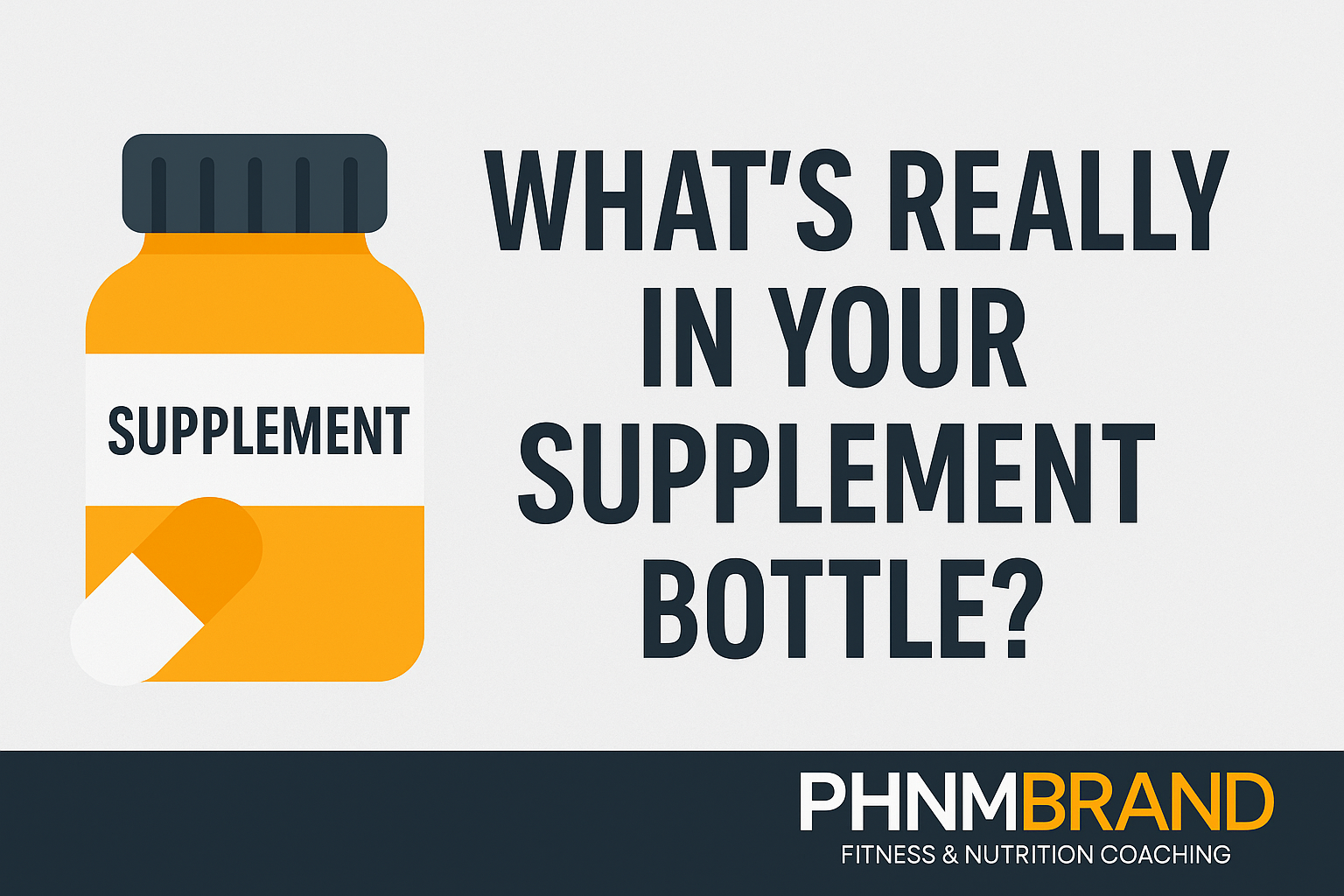🔍 What’s Really in Your Supplement Bottle?
Walk into any gym, health store, or scroll your feed, and you’re bombarded with powders, pills, and promises. Supplements claim to help you build muscle, lose fat, improve focus, or recover faster. But behind the labels and hype lies a question few people ask:
What’s inside that bottle?
In this post, we’ll explore surprising facts about supplement safety, regulation, and transparency—and how to make smarter, safer choices.
📊 The Stats That Might Surprise You
- Only ~20% of supplements are third-party tested
That means many supplements on the market have never been independently verified for purity or accuracy. There’s no one double-checking the label.
Source: Consumer Reports, NSF International
- Over 50% contain ingredients not listed on the label
Independent lab testing has revealed that more than half of supplements include hidden or undeclared substances. This can range from ineffective fillers to potentially dangerous or banned ingredients.
Source: Journal of the American Medical Association (JAMA), 2017
- Nearly 80% of consumers believe supplements are regulated like medications—but they’re not
Unlike pharmaceutical drugs, dietary supplements are not required to undergo clinical testing or FDA approval before hitting the market. Many people mistakenly believe otherwise.
Source: CRN Consumer Survey, 2020
⛔ Why Supplements Aren’t as Regulated as You Think
The supplement industry operates under a different set of rules. While medications must go through years of testing, the Dietary Supplement Health and Education Act (DSHEA) of 1994 limits the FDA’s power to regulate supplements.
What that means for you:
- Supplements can be sold without pre-approval
- Companies are responsible for their own testing (if they do any)
- The FDA only steps in after a product causes harm
This leaves a lot of room for false claims, underdosed ingredients, or hidden substances to make it into your daily stack.
🧪 Why Third-Party Testing Matters
Third-party testing is one of the best safeguards consumers have. When a product is verified by an independent lab, it has been tested for:
- Ingredient accuracy
- Purity (no heavy metals or contaminants)
- Proper dosing
Look for seals like:
- NSF Certified for Sport®
- Informed-Sport
- USP Verified
These indicate the supplement has passed strict quality standards beyond what the law requires.
📂 How to Choose Safe Supplements
Use this quick checklist when shopping:
Look for:
- Clear labeling with full ingredient transparency
- Third-party testing seals (NSF, USP, Informed-Sport)
- Reputable brands with a history of clean products
Avoid:
- “Proprietary blends” that hide actual dosages
- Over-the-top claims like “burn fat overnight”
- Products without contact info or company transparency
If you’re ever unsure, stick to products with clinical backing and verifiable quality.
🧠 The Doctor Gap
Here’s something most people don’t realize:
Fewer than 25% of U.S. medical schools offer formal education in nutrition or supplementation.
That means most doctors are not trained to evaluate supplements or help you choose safe products. It’s not their fault—but it is a knowledge gap.
That’s why it’s crucial to learn the basics yourself or work with a coach who understands the science.
🔍 Final Thoughts
Supplements can help or hurt. It all depends on what you buy and why.
Don’t assume the label is honest. Don’t assume the product is safe. And don’t assume the industry is watching your back.
If you want to supplement smart, start by asking the right questions:
- Is this third-party tested?
- Do I really need this?
- Is this brand transparent?
Want help building a supplement plan that fits your goals? Reach out at phnmresults@gmail.com or check out our personalized coaching options at www.PhnmFit.com
Your results (and your health) are too important to leave to guesswork.

